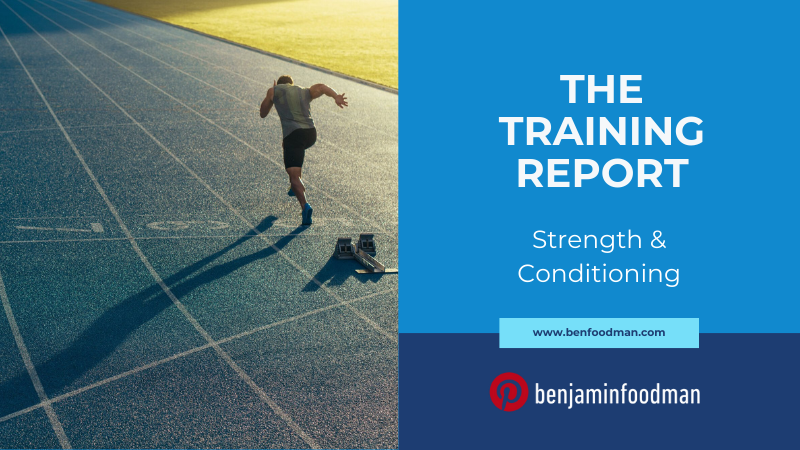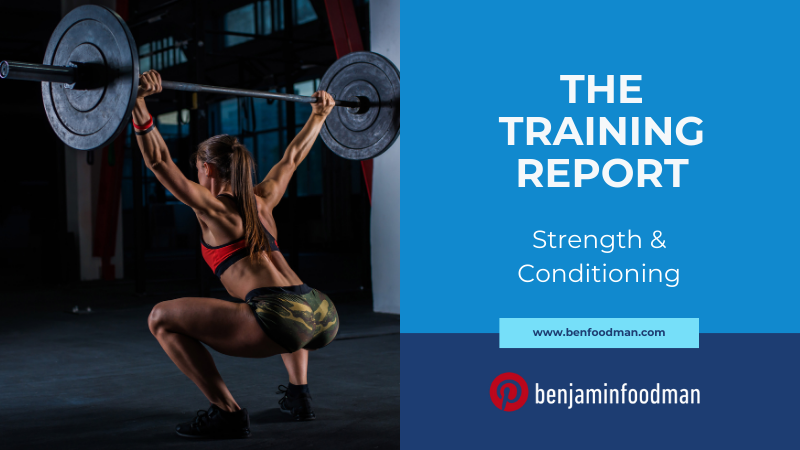Strength & Conditioning - How To Develop Championship Athleticism With ALMOST No Equipment
About the Author
Ben Foodman is a licensed psychotherapist & performance specialist. He owns his private practice located in Charlotte North Carolina where he specializes in working with athletes to help them overcome mental blocks (the yips), PTSD, ADD / ADHD and achieve flow states through the techniques of Brainspotting & Neurofeedback. If you are interested in services, use the link here! Enjoy the article below!
Introduction: Elite Athletes & Minimalist Training Style
When athletes come to work with me in North Carolina for mental performance enhancement, we often will review their strength & conditioning protocols. One common issue that frequently arises in our work together is the misperception that they need the latest and greatest exercise equipment to achieve maximum results. While there may be interesting advantages to having some newer pieces of equipment, athletes would be surprised to learn that as long as the exercise programming is smart, top of the line equipment is not needed.
For this Training Report I am going to provide a sample program for how an athlete can train with ALMOST no equipment and still achieve elite level results. I will explore how athletes should use plyometrics, what type of strength training to focus on, as well as kettlebell use. Finally, I will also provide a recovery tactic to use at the end of your training. First, let’s dig into plyometrics and why this is such a great exercise.
Part I. Athletes, Explosive Power & Plyometrics
According to the National Strength & Conditioning Association (NSCA), Plyometrics have been defined as follows: Plyometric exercise refers to those activities that enable a muscle to reach maximal force in the shortest possible time. Plyometric is a combination of Greek words that literally means to increase measurement (plyo=more; metric=measure). Practically defined, plyometric exercise is a quick, powerful movement using a pre-stretch, or countermovement, that involves the stretch-shortening cycle. The purpose of plyometric exercise is to increase the power of subsequent movements by using both the natural elastic components of muscle and tendon and the stretch reflex.
Plyometrics are an excellent exercise to use for minimalist training for several reasons: first, it efficiently helps athletes produce explosive power which is necessary for all sports; second, there are many variations of plyometric exercises that athletes can choose from which will also afford them the benefits of cross-training; finally, plyometrics require no equipment which makes this one of the more cost-effective exercises. We will review what this looks like in an actual program, but we now need to review the next critical exercise athletes MUST HAVE in their programming.
Part II. Hex Bar Deadlift: The GOAT Of Exercise Equipment
Minimalist doesn’t mean that you can train effectively with 0 equipment. But one of the most efficient pieces of equipment that will yield some of the best results is the hex bar deadlift. The hex bar deadlift is highly efficient because the lifter is already in the most ergonomically advantageous position, reducing the potential negative outcomes that come with standard deadlift but maintaining all the benefits.
The hex bar deadlift allows the athlete to significantly add load through systematic progressive programming. The largest muscle group in the body is fully utilized (leg muscles) helping athlete create the desired anabolic effect that comes from training this area of the body. If you want to go cheap, you can find very affordable hex bars. But if you want to spend a little extra coin and get more bang for your buck, the Kabuki Deadlift Bar is one of a kind.
Part III. Enter The Kettlebell
Kettlebell work is highly efficient for functional strength training, explosive power development, and addressing unilateral and bilateral strength deficiencies. The equipment has easy storage capacity, high quantity of high quality exercise selection, and is incredibly affordable. When deciding how many kettlebells to get, my recommendation is always one light kettlebell, two medium kettlebells and one heavy kettlebell (4 total should do the trick).
I have written previously on the Training Report about kettlebell training which I encourage you to read to have additional resources on program design, but adding kettlebell work to the plyometric and hex bar deadlift training will enhance the functional strength training benefits of this specific program design. Again, ALL athletes will benefit from this combination of three exercises. Now, let’s get to the good stuff and explore what this looks like in an actual program design!
Disclaimer - This is a sample program design and not intended for use. Consult with your physician and strength coach first
Part IV. Sample Program Design For Training & Active Recovery
Active Warm Up (3 x 10 For all movements, side line leg raise, hand to pocket, dead bugs, planks)
Plyometrics - Power Skip 3 x 20 seconds, Alternate Leg Push Off 3 x 20 seconds, Chest Pass 3 x 10-15 Reps
Hex Bar Deadlift - 3 x 6-8 @ 80-90% intensity (IF you have the Kabuki Deadlift Bar, add farmers walks at the end of each set)
Kettlebell Work - Kettlebell Swings 3 x 8 On Medium To Heavy Kettlebell; Turkish Get Ups 3 x 8 on Medium to Light Kettlebell; Half Kneeling Single Arm Shoulder Press 3 x 8 on Medium to Light Kettlebell; Single Leg RDL 3 x 8 On Medium to Light Kettlebell
Repeat Active Warm Up Routine And ADD Advanced Active Recovery Tactic Vergence (Read this Training Report To Learn More)
Note To Reader:
If you are an athlete reading this segment of the TRAINING REPORT, hopefully this content was helpful! I put the Training Report together because I felt like many of the discussions on issues such as the Yips/mental blocks, strength training & other subject matter on athlete performance concepts were really missing the mark on these ideas (e.g. how trauma is the direct cause of the Yips). If you are interested in learning more, make sure to subscribe below for when I put out new content on issues related to sport psychology & athlete performance! Also, if you are looking to work with a mental performance specialist, you are in the right place! USE THIS LINK to reach out to me to see if my services are the right fit for your goals!
ARE YOU ON THE LIST?
Make sure you’re signed up to Ben’s mailing list to receive news & updates on new strategies in sport psychology, upcoming workshops & products. Don’t wait, sign up now!



























